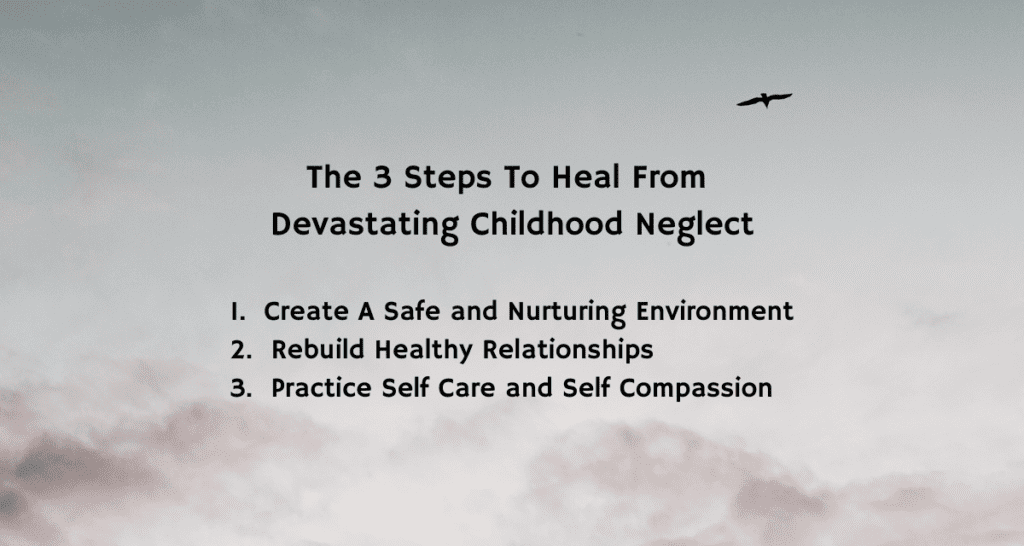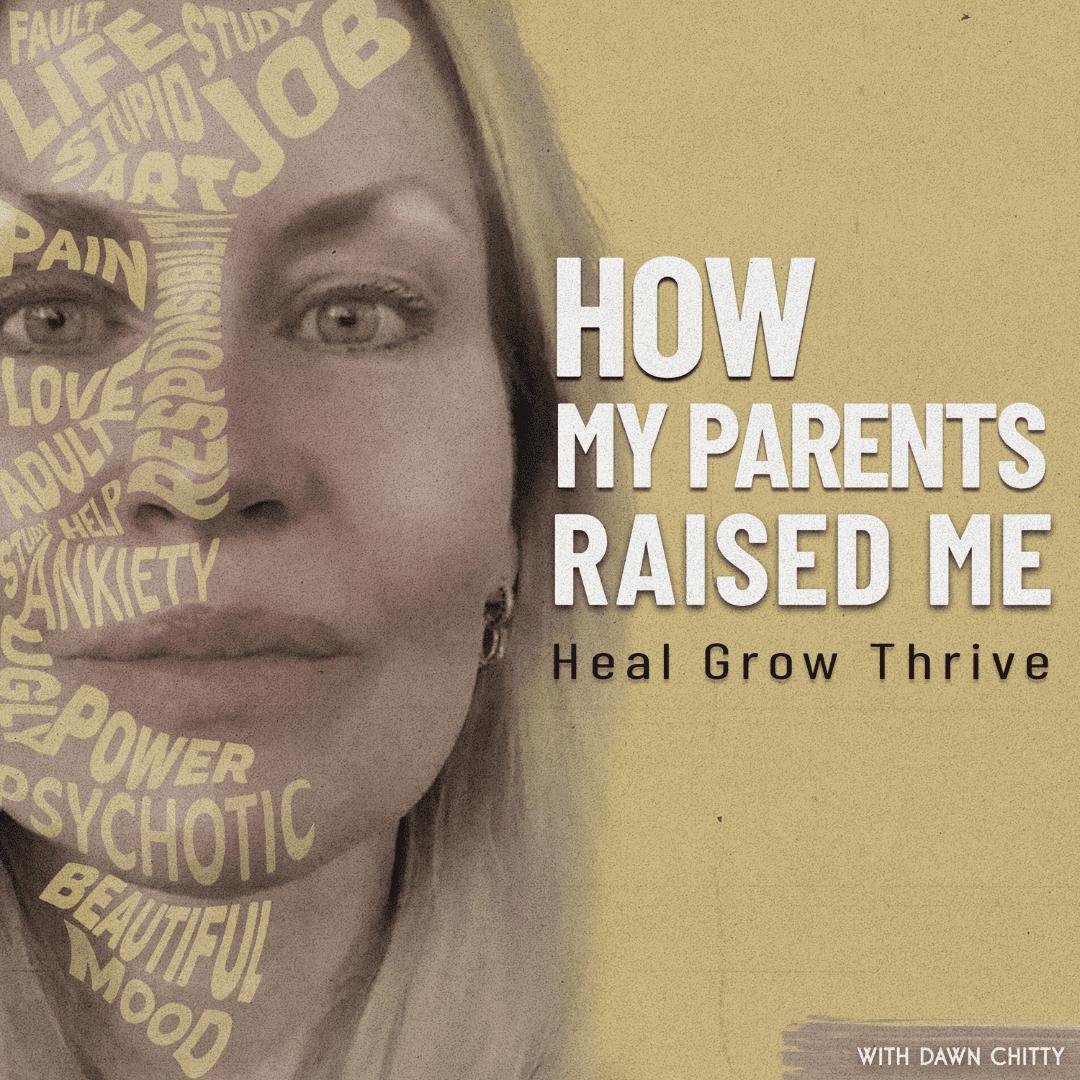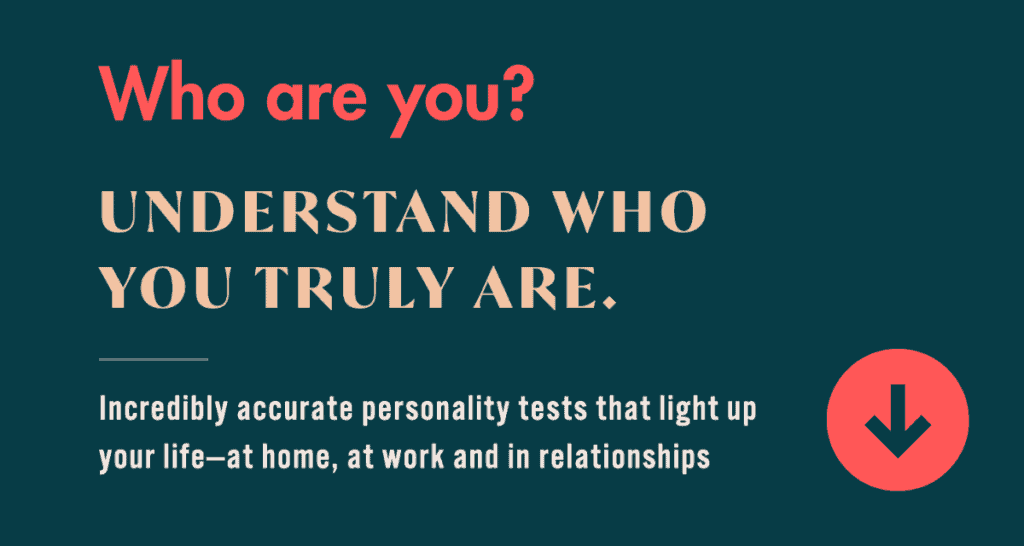How to heal from devastating childhood neglect.
Childhood is often seen as a time of innocence, joy, and carefree exploration. It is a crucial phase in human development, shaping the foundation for our emotional, cognitive, and social well-being. However, for some individuals, childhood is marred by experiences that leave lasting scars on their hearts and minds. This dark side of childhood is known as childhood trauma, a topic that has gained increasing recognition and understanding in recent years.
Childhood trauma refers to experiences of overwhelming stress, fear, or harm that occur during the formative years of a person’s life. These traumatic events can take various forms, including emotional, physical or sexual abuse, neglect or witnessing domestic violence. They can be acute, such as a single incident, or chronic, occurring repeatedly over an extended period.
Neglect, a form of childhood trauma, is a deeply concerning issue that often goes unnoticed or unrecognized. It occurs when a child’s basic physical or emotional needs are consistently unmet by their caregiver.

The consequences of neglect can be severe and long-lasting. Children who experience neglect may develop a pervasive sense of worthlessness, as their fundamental needs for love, care, and security remain unfulfilled. The lack of emotional support can hinder their ability to form healthy relationships, leading to difficulties in trusting others and forming deep connections later in life. Neglected children may also struggle with self-regulation, as they have not been taught healthy coping mechanisms and have not received consistent guidance in managing their emotions.
Healing from the profound effects of neglect is a challenging and complex journey, but it is absolutely possible with the right support and resources. The healing process involves addressing deep emotional wounds and building resilience to overcome the negative impacts of neglect.
How To Heal From Devastating Childhood Neglect
1. Create A Safe and Nurturing Environment to heal from devastating childhood neglect
Central to the healing process is the establishment of a safe and nurturing environment. Creating a stable and secure space allows you to begin rebuilding trust and redefining your sense of self-worth. This environment can be provided through therapeutic interventions, such as trauma-focused therapy or counselling, where you can explore emotions, experiences, and learn healthy coping mechanisms.
Here are some general principles and strategies to help you establish a safe and nurturing environment:
- Clear Communication: Encourage open and honest communication by actively listening to others, validating their feelings, and promoting respectful dialogue. Create an atmosphere where you and others feel comfortable expressing your thoughts, concerns, and ideas.
- Establish Boundaries and Expectations: Set clear boundaries and expectations for behavior, interactions, and responsibilities. Clearly communicate these expectations to everyone and consistently enforce them. This helps create a structured and predictable environment that fosters a sense of safety and security.
- Create Emotional Safety: Foster emotional safety by promoting empathy, kindness, and understanding. Encourage a non-judgmental and supportive atmosphere where you and others feel comfortable expressing your emotions without fear of ridicule or rejection.
- Establish Trust: Build trust within your environment by being reliable, consistent, and trustworthy yourself. Encourage trust with others by promoting mutual respect. Trust allows people to feel secure and nurtured.
- Positive Reinforcement: Recognize and celebrate your achievements. Celebrate yourself and reward yourself to promote personal growth and self-esteem.
- Supportive Relationships: Foster strong and supportive relationships, build connections and a sense of belonging amongst the people you spend your time with.
- Personalized Approach: Recognize and respect the individuality of each person. Tailor your approach to meet their unique needs, strengths, and interests. By understanding and addressing their specific requirements, you create an environment that nurtures their growth and development.
- Continuous Improvement: Regularly evaluate where you are at in your healing process. Foster a growth mindset and be open to learning and evolving.

2. Rebuild Healthy Relationships to heal from devastating childhood neglect
Working to rebuild healthy relationships is another vital aspect of healing from neglect. Connecting with supportive and empathetic friends, family members, or professional caregivers, can help fill the void left by neglect and provide the nurturing and understanding that was lacking in childhood. Through these relationships, individuals can learn to trust, receive love and support, and develop healthy patterns of attachment.
- Reflect on the Past: Take time to reflect on the past. Identify patterns, triggers and areas for improvement. Understanding the past can provide invaluable insights.
- Communication and Active Listening: Establish open and honest communication as the foundation for rebuilding your relationships. Practice active listening, which involves giving your full attention to the other person, seeking to understand their perspective, and responding empathetically. Allow each person to express their feelings, thoughts, and concerns without interruptions or judgment.
- Express Yourself Effectively: Clearly and assertively express your own needs, boundaries, and feelings. Use “I” statements to avoid blaming or accusing the other person. Focus on expressing yourself honestly and respectfully, whilst also being receptive to the other person’s perspective.
- Rebuild Trust: Rebuilding trust takes time and consistency. Be reliable and follow through on your commitments. Apologize for past mistakes or hurtful actions. Demonstrate integrity, honesty, and transparency in your interactions. Trust is built gradually through consistent positive actions.
- Practice Empathy and Understanding: Try to put yourself in the other person’s shoes and understand their feelings and experiences. Show empathy and validate their emotions, even if you don’t agree with their perspective. Cultivating empathy fosters a sense of connection and can help repair damaged relationships.
- Set Boundaries: Establish clear boundaries to protect your own well-being and ensure a healthy dynamic. Communicate your boundaries respectfully and encourage the other person to do the same. Respecting each other’s boundaries creates a safer and more respectful environment.
- Seek Professional Help if Needed: Depending on the severity of the issues or the complexity of the relationship dynamics, it may be helpful to seek professional assistance. A therapist, counselor, or mediator can provide guidance, facilitate communication, and offer strategies to rebuild the relationship effectively.
- Patience and Forgiveness: Rebuilding relationships takes time, and it’s important to be patient with the process. Forgiveness can be helpful to move forward, but forgiveness is more about letting go of the energy of that resentment held in your body, rather than saying that what has happened was okay.

3. Practice Self Care and Self Compassion to heal from Devastating childhood neglect.
Self-care and self-compassion are vital for maintaining overall well-being and nurturing a healthy relationship with yourself.
Here’s an overview of these concepts and some strategies to practice self-care and self-compassion:
1. Self-Care:
Physical Self-Care: Take care of your physical health by getting regular exercise, eating nutritious meals, getting enough sleep, and attending to your medical needs.
Emotional Self-Care: Nurture your emotional well-being by engaging in activities that bring you joy and relaxation, such as hobbies, reading, listening to music, or spending time with loved ones.
Mental Self-Care: Prioritize your mental well-being by practicing mindfulness, meditation, or engaging in activities that stimulate your mind, such as puzzles or learning new skills.
Social Self-Care: Cultivate healthy relationships and connections with others. Seek support from friends, family, or support groups when needed, and engage in positive social interactions.
Spiritual Self-Care: Connect with your values, beliefs, or spiritual practices that provide you with a sense of meaning and purpose. This can involve meditation, prayer, spending time in nature, or engaging in acts of kindness.
2. Self-Compassion:
Practice Self-Acceptance: Embrace yourself as you are, including your imperfections and mistakes. Recognize that everyone experiences difficulties and that it’s okay to have flaws.
Treat Yourself with Kindness: Be as kind and gentle with yourself as you would with a close friend. Offer yourself words of encouragement, understanding, and support in challenging times.
Practice Mindfulness: Develop awareness of your thoughts, emotions, and sensations without judgment. Acknowledge and accept your experiences, both positive and negative, with an attitude of curiosity and compassion.
Let Go of Self-Criticism: Replace self-critical thoughts with self-compassionate ones. Challenge your negative self-talk and reframe it with positive and compassionate affirmations.
Set Healthy Boundaries: Learn to say no when needed, and prioritize your own needs and well-being. Setting boundaries allows you to protect your energy and create space for self-care and self-compassion.
3. Daily Rituals and Habits:
Incorporate Self-Care Activities: Schedule regular self-care activities that nurture your body, mind, and soul. It can be as simple as taking a relaxing bath, reading a book, or going for a walk in nature. How To Bring Yourself Back To Purpose, Passion, Fire And Joy
Practice Gratitude: Cultivate gratitude by reflecting on things you appreciate and are thankful for in your life. This practice can shift your focus towards positivity and increase your overall well-being.
Engage in Self-Reflection: Take time to reflect on your emotions, needs, and desires. Journaling or practicing mindfulness can help you gain insights into your inner experiences and foster self-awareness.
Prioritize Rest and Relaxation: Make sure to include rest and relaxation in your routine. Dedicate time for activities that help you unwind, such as listening to soothing music, practicing deep breathing, or engaging in mindfulness exercises.
Remember, self-care and self-compassion are ongoing practices that require patience and self-awareness. It is important to tailor these practices to suit your individual needs and preferences. By prioritizing self-care and cultivating self-compassion, you can nurture a positive relationship with yourself and enhance your overall well-being.
When you create a safe and nurturing environment, build healthy relationships and practice self care and self compassion you will be actively healing yourself from devastating childhood neglect. You might also love 24 Ways To Love Yourself










